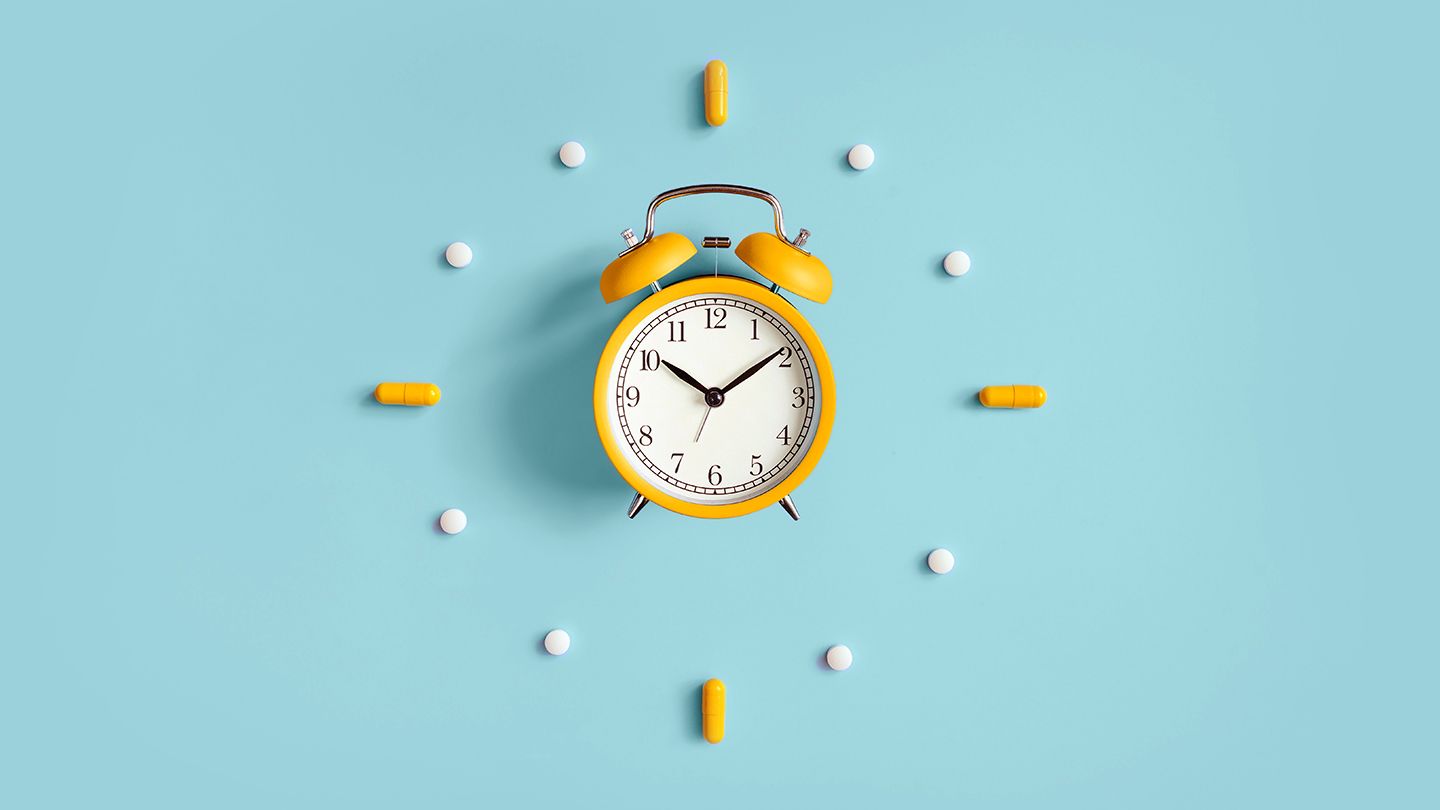Let's be honest when you first hear about CBT for ADHD, what comes to mind? Probably something like lying on a couch, talking through your feelings, right? Maybe you picture long, drawn-out sessions where you try to unpack your childhood trauma just to figure out why you're always late.
Here's the thing that's not really what CBT for ADHD is about. Think of it more like a workshop where you're learning new skills to manage your brain's software. Instead of just trying to understand why you struggle with focus, you're actually learning practical techniques that can help you train your attention, break unhelpful patterns, and create systems that work with your ADHD, not against it.
I know what you're thinking another method that promises to "fix everything"? I get it. I've been there too, scrolling through blog posts and YouTube videos, hoping to find something that actually sticks. But here's the difference with CBT: it's not about fixing you. It's about giving you tools to better navigate your world, exactly as you are.
What CBT for ADHD Really Means
So what is CBT for ADHD, anyway? At its core, Cognitive Behavioral Therapy for ADHD is about identifying and reshaping the thought patterns that make your symptoms worse. It's less about uncovering deep emotional wounds and more about recognizing thoughts like, "I can't focus on boring tasks," and then learning practical ways to work around that reality.
Unlike traditional talk therapy, which might explore your emotions and past experiences, CBT is focused and actionable. It's about noticing that when you think, "This project is too big to even start," you're actually reinforcing a cycle that leads to procrastination. And then it gives you tools to break that cycle like breaking a massive project into five-minute micro-tasks.
The beauty of CBT is that it's grounded in science. Research shows that our thoughts directly impact our behavior and emotions (a study in cognitive therapy confirms that changing thought patterns can lead to real behavioral changes). For people with ADHD, this is huge because so much of the struggle isn't just about attention it's about how we interpret our own abilities and challenges.
Why CBT is Gaining Recognition
In recent years, mental health professionals have started recognizing that ADHD isn't just about hyperactivity or inattention it's about executive functioning. That includes things like planning, emotional regulation, and working memory. CBT targets these areas directly, which is why more therapists are incorporating it into their practices.
One thing that makes CBT particularly appealing is that it can stand alone or complement medication. Some people find that combining CBT with medication gives them the best of both worlds the chemical balance that medication provides, plus the practical coping strategies that CBT teaches.
Of course, it's not perfect for everyone. CBT requires active participation and consistency. It's not a magic wand you wave and suddenly become organized. It's more like learning to play guitar progress takes time, patience, and regular practice.
Let me share a quick story: Sarah, a 34-year-old marketing manager, had been struggling with what she called "ADHD paralysis" getting stuck in loops of negative thinking that kept her from starting important projects. After working with a CBT therapist who specialized in ADHD for three months, she learned to recognize her procrastination triggers and developed small rituals that helped her break through the mental blocks. The change wasn't overnight, but it was real and lasting.
Inside a CBT Session for ADHD
So what does a CBT session for ADHD actually look like? Well, it's typically structured and goal-oriented. You and your therapist will set specific, measurable goals for each session. Maybe that's improving your morning routine, managing work deadlines more effectively, or reducing anxiety around social situations.
Sessions usually follow a pattern: checking in on how your homework went (yes, there's usually homework), reviewing your progress, learning new techniques, and then practicing them together. The emphasis is on applying what you're learning in real-life situations, not just discussing it in the therapy room.
Common tools you'll encounter include thought records, behavioral experiments, and activity scheduling. For example, you might track when you're most likely to procrastinate and test whether your assumptions ("I can only focus when I'm interested in something") are actually true. Spoiler alert: they usually aren't.
The core goals of CBT for ADHD typically revolve around:
- Improving executive function through structured exercises
- Breaking negative thought cycles that sabotage your efforts
- Building self-awareness about your unique ADHD patterns
- Developing emotional regulation skills
ADHD Therapy Exercises You Can Try
Want to give some CBT techniques a try? Here are a few ADHD therapy exercises that can make a real difference:
Thought challenging worksheets - When you notice yourself thinking, "I always mess things up," challenge that thought. Is it actually true? What evidence do you have? What would you tell a friend who said the same thing about themselves?
Daily routine structuring - Create a simple morning and evening routine using visual cues and timers. The key is making it so easy you can't say no to it.
Time blindness coping strategies - Use the "body double" technique where you work alongside someone else (virtually or in person) to stay on track, or set multiple alarms not just for when something is due, but for when you need to start preparing.
Behavioral activation for low motivation - When you're feeling stuck, commit to just five minutes of a task. Often, starting is the hardest part, and momentum builds naturally from there.
CBT Techniques You Can Practice Independently
You don't always need a therapist to benefit from CBT principles. Here are some ADHD coping strategies you can start using right now:
Behavioral experiments - Test your assumptions about your ADHD. Think you can't focus unless something is interesting? Try the Pomodoro Technique for 10 minutes on a "boring" task and see what happens.
Thought records - Keep a simple notebook where you write down negative thoughts when they pop up, challenge them, and write down more balanced alternatives.
Habit stacking - Link new ADHD-friendly behaviors to existing habits. Want to remember to take medication? Do it every time you brush your teeth in the morning.
Staying consistent with these practices can be tricky, especially when motivation wanes. That's why it helps to use tools designed specifically for neurodivergent brains. Apps like ADHD Nerd offer guided CBT exercises, or you could try using bullet journaling systems that incorporate CBT principles.
Weekly reflection prompts can also keep you accountable. Ask yourself questions like: "What thought patterns helped me this week?" or "Which coping strategy worked best when I felt overwhelmed?"
Let me tell you about Michael, a college student who struggled with ADHD throughout high school. He started using a simple habit-stacking technique, attaching his daily planner review to his morning coffee routine. Within a month, he noticed he was turning in assignments on time and feeling less anxious about deadlines. Sometimes the smallest changes create the biggest shifts.
How CBT Compares to Other ADHD Treatments
When considering ADHD treatment options, it's helpful to understand where CBT fits in the bigger picture. Let's be real there's no one-size-fits-all solution, and what works for one person might not work for another.
Compared to medication, CBT doesn't provide immediate symptom relief, but it offers long-term coping strategies. While medication can help with the chemical aspects of ADHD, CBT addresses the behavioral and cognitive patterns that influence how you manage your symptoms day-to-day.
ADHD coaching is another popular option, but it tends to focus more on accountability and goal-setting rather than addressing underlying thought patterns. Think of coaching as having a personal trainer for your life goals, while CBT is more like learning the science behind how your brain works and how to hack it.
Lifestyle changes like exercise, sleep hygiene, and nutrition can absolutely make a difference. In fact, research shows that combining these approaches often yields better results than any single intervention alone (a study on integrative ADHD treatment supports this combination approach).
| Therapy Type | Focus Area | Best For | Cons |
|---|---|---|---|
| CBT | Thinking + behavior | Adults, structured learners | Requires effort + consistency |
| Medication | Brain chemistry | All ages, immediate symptoms | Side effects, dependency concerns |
| Coaching | Accountability | Motivation, goal-setting | Less science-backed |
Recent Research on CBT for ADHD
The research on CBT for ADHD has been pretty encouraging. Studies from 2022-2025 have continued to show positive outcomes, particularly for adults who may have struggled with traditional treatments.
One significant finding is that CBT tends to be especially effective for adults with ADHD, possibly because adults are often more motivated to make changes and better able to implement complex strategies. Success rates vary, but many studies show measurable improvements in focus, time management, and emotional regulation.
What's particularly interesting is that the benefits often extend beyond symptom management. People report feeling more confident, having better relationships, and experiencing less shame around their ADHD challenges.
Finding the Right CBT Therapist
If you decide to work with a professional, finding a therapist who understands ADHD is crucial. Not all CBT therapists have experience with neurodivergent clients, and that can make a huge difference in your results.
When interviewing potential therapists, ask about their experience with ADHD specifically. Red flags include therapists who suggest that ADHD is just about lack of willpower or who don't understand the executive function challenges that come with ADHD.
Good questions to ask include: "How do you adapt CBT techniques for ADHD brains?" and "What's your experience working with clients around my age?" You want someone who sees ADHD as a different way of processing, not a character flaw.
Directories like Psychology Today allow you to filter by specialties, and organizations like CHADD (Children and Adults with Attention-Deficit/Hyperactivity Disorder) often have therapist referral lists.
Self-Guided CBT for ADHD
Is self-guided CBT effective? Absolutely for many people. It requires more self-discipline and motivation, but there are excellent resources available.
Books like "The ADHD Workbook" by Susan Perry and "Manage Your ADHD" by Jodi Slee offer structured CBT programs you can work through independently. Online platforms like Get Self Help provide free CBT worksheets specifically designed for ADHD.
Structured workbooks can be particularly helpful because they guide you through the process step by step. Look for resources that include practical exercises, not just theory.
Of course, there's a point where professional support becomes valuable especially if you're dealing with co-occurring conditions like anxiety or depression, or if you're not seeing progress on your own.
Your CBT Starter Toolkit
Ready to dive in? Here's a simple starter toolkit for combining CBT with ADHD management:
A basic CBT thought record template you can print out or use digitally to track and challenge negative thoughts. Simple apps like Moodnotes or Daylio can help you monitor your patterns without being overwhelming.
Recommended workbooks to check out: "The ADHD Workbook for Teens" by Stephanie Sarkis and "Driven to Distraction" by Edward Hallowell and John Ratey.
Try this beginner challenge: For 30 days, every time you catch yourself thinking something negative about your ADHD (like "I'm just lazy"), write it down and challenge it with one piece of evidence that contradicts that thought.
Moving Forward with Confidence
So where does this leave us? CBT for ADHD isn't about becoming a different person or magically fixing your brain. It's about developing new skills and strategies that help you work with your brain's unique wiring rather than fighting against it.
Think of it like learning a new language at first, everything feels clunky and unnatural. But with practice, the techniques become second nature. You start recognizing your thought patterns more quickly, challenge unhelpful beliefs without even thinking about it, and develop systems that actually work for your brain.
It's not always easy, and progress isn't always linear. Some days you'll feel like you've got this, and others you'll wonder if any of it is working. That's normal. What matters is consistency over perfection.
If you're curious about trying some of these techniques, start small. Pick one exercise this week maybe thought challenging or habit stacking and see how it feels. Notice what's helpful and what isn't. Adjust as you go.
And remember, you're not alone in figuring this out. We're all navigating this journey together, learning what works and what doesn't, one small step at a time. What matters most isn't that you get everything right it's that you keep showing up for yourself with curiosity and compassion.
FAQs
What is CBT for ADHD and how does it differ from regular talk therapy?
CBT for ADHD focuses on practical skills to change unhelpful thoughts and behaviors, using structured exercises like thought records and activity scheduling, rather than exploring past experiences.
Can CBT be effective without medication?
Yes. While medication can provide quick symptom relief, CBT offers long‑term strategies for organization, time management, and emotional regulation that work even without drugs.
How long does it typically take to see results from CBT for ADHD?
Results vary, but many people notice improvements in focus and procrastination after 8–12 weekly sessions when they consistently practice the techniques.
Are there specific CBT exercises I can try at home?
Common home exercises include thought‑challenging worksheets, habit stacking, the Pomodoro Technique for time‑blinded tasks, and daily routine structuring with visual cues.
What should I look for when choosing a CBT therapist for ADHD?
Choose a therapist who has experience with ADHD, adapts CBT methods to executive‑function challenges, and emphasizes skill‑building rather than attributing symptoms to willpower.
Disclaimer: This article is for informational purposes only and does not constitute medical advice. Always consult with a healthcare professional before starting any new treatment regimen.
Related Coverage
Adderall shortages have led many to buy it illegally, but with prices from $3 to $30 a pill and major health/legal risks, it's an extremely dangerous idea....
Research on gluten free diets for ADHD has shown mixed results. It may help a subset of children with gluten sensitivity. Learn about foods to eat and avoid....
Research shows potential connections between worsening ADHD symptoms and gluten. Learn how gluten free diets work, implementing elimination protocols, reintroduction, pros vs cons....
With ongoing Vyvanse shortages, what's the latest news for 2023? Get strategies for coping with low supply, finding alternative meds, assistance programs & advocacy....
When an ADHD child refuses schoolwork, it often stems from struggles to focus, follow instructions, and handle the demands of school. With support at home and accommodations at school, they can overcome avoidance....
Magnesium for ADHD may boost focus, calm restlessness, and improve sleep. Learn safe dosages, benefits, risks, and top food sources....
If you think you may have ADHD, there are steps to take before meeting with your doctor, like tracking symptoms and reviewing your history. Openly discuss your concerns and learn about diagnostic processes and possible ADHD treatments....
Learn how long methylphenidate remains detectable in blood, urine, saliva, and hair. Factors like dose, metabolism, age affect detection windows....
Adderall shortages can make filling your prescription difficult. Learn techniques to check pharmacy inventory and locate Adderall when supplies are low....
Embrace the power of superfoods and elevate your conscious lifestyle. Discover 15 nutrient-dense powerhouses that offer a wealth of benefits for your body, mind, and spirit....









